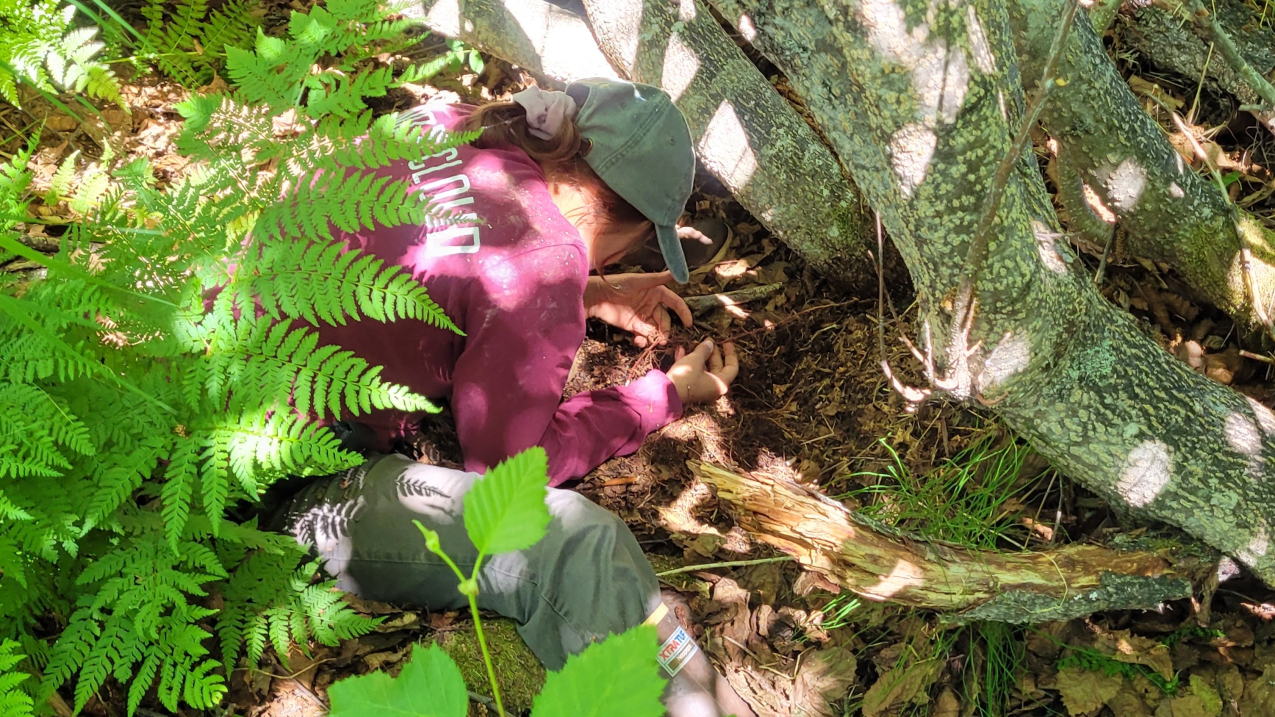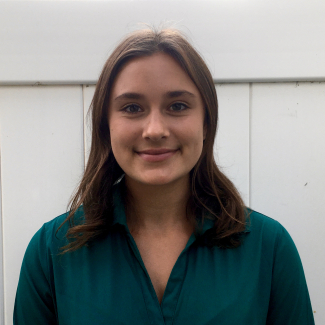My name is Ronja Steinbach and I am an EPP/MSI class of 2021 scholar. I am a marine biology major, botany minor, and honors student at the University of Hawaiʻi at Mānoa. This past summer I had the great privilege of doing my internship at the Kachemak Bay National Estuarine Research Reserve. My project focused on the fungi that live in association with alders (Alnus spp.) in the Kachemak Bay watersheds.

Ronja Steinbach, a 2021 EPP/MSI scholar collecting alder (Alnus spp.) roots during her 2022 summer internship at the Kachemak Bay National Estuarine Research Reserve. (Image credit: Kai Rains, Ph.D.)
Project summary
Alders are important plants in the region because they play a role in increasing nitrogen in the ecosystem. In the Kachemak Bay region, nitrogen is necessary for the health of the entire system because it is a limiting nutrient, which means that the amount of nitrogen limits the amount of growth in the ecosystem.
Project objectives
There were three main objectives to my project:
1. Identify the ectomycorrhizal fungi associating with the alders.
Ectomycorrhizal fungi interact with plant roots, ultimately helping the plants take up nutrients such as nitrogen.
2. Understand more about the effects of the alders and their microbial communities on vegetation downslope of the alders.
Our hypothesis was that plants living downhill from alders would get more nitrogen in runoff and therefore the plant communities would differ in areas with alders compared to areas without alders. We accomplished this by sampling random cubic meter areas to identify what plant species were present and percent cover (the percentage of the plot each species filled), downslope of alders.
3. Engage with the community on the topic of fungi in the Kenai Peninsula.
I created materials to be used in discovery labs, where community members are invited to participate in hands-on activities to learn more about ongoing Kachemak Bay National Estuarine Research Reserve research. I connected with local teachers and created educational materials appropriate for K-12 and college students that will be piloted this upcoming school year. These materials included PowerPoint presentations for different grade levels, infographics, and protocols for hands-on activities inside and out of the classroom.
Being a part of such an incredible research team and doing meaningful research made [the internship] a very impactful experience.

Ronja Steinbach is a 2021 EPP/MSI undergraduate scholar and marine biology major, botany minor, and honors student at the University of Hawaiʻi at Mānoa.

